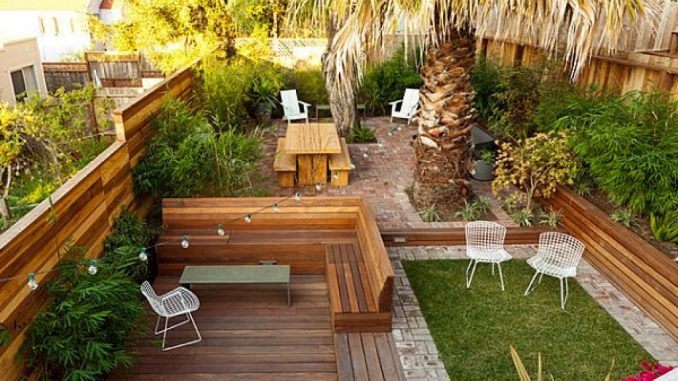
[ad_1]
Tree planting is generally done during the fall season and is quite simple as long as you have a few guidelines. Tree planting should be done in a hole that is about three times the width of the tree’s root ball and no deeper in the soil that it’s original container. If the opening is not wide enough the roots of the tree will have no where to spread and if it is too deep not enough oxygen can reach the roots for proper growth.
For the most part trees should be planted as soon as possible after they have been purchased. Trees that have their roots balled or wrapped in burlap can be stored in a shady area for a short period of time as long as the ball is kept moist. Always lift a balled tree by the root ball and not by the trunk. If the root ball has been wrapped in natural burlap all you need to do is cut it away or just pull it back about 1/3. Plastic or synthetic burlap needs to be cut away completely along with all the string before planting. Gently place the tree in the hole and start to back-fill with your favorite organic mixture such as topsoil, compost, completely around the tree but just to the top of the root ball to allow for settling. You do not want to compress the soil because you want water to penetrate through to the roots; if soil compression is done the roots will have a difficult time expanding out as they should.
You can also store container trees just as you did the balled tree but for a shorter period of time; being in containers they will heat up faster and dry out quicker. The tree planting procedures will be much the same as it was for balled trees. All plastic containers need to be removed completely but with fiber containers all you need to remove are the sides, the bottom can stay attached. Always check the roots of the trees after removing from the original container to be sure they are not root bound. If they are use your fingers to carefully loosen them or you can use a blunt tool; after loosening them carefully spread them out prior to planting. Once your tree is in place, back-fill to the original soil level that it had in the original container and do not compress the soil.
Bare root trees are those that are wrapped in a bag or not wrapped at all; these trees do not have any soil protecting the roots. Because of this fact they need to be planted in the ground or in your favorite container as soon as possible. Before you purchase a bare root tree check to see the roots are moist and they have several fine root hairs coming from them, this is a sign the tree is healthy. If at all possible keep the roots as moist as possible, but not soaking wet, prior to planting. Once you have your hole dug for a bare-root you need to create a mound of soil inside, next place the tree on the mound and spread out the roots over the mound. You can also remove any broken or damaged roots as you are placing on the mound.
A newly planted tree needs to have water right after it has been planted. Your tree, while in its first growing season, will need watering weekly particularly if there is no rain and probably more often when the weather turns hot. You can deprive the tree of oxygen if you give it too much water. If you are not sure it needs water just dig down around the edges about 6 inches or more; if the soil is moist and you are able to form a ball, do not water, but if it is powdery the tree needs a drink. Slow deep watering is better for trees since the water needs to reach at least 12 inches to induce maximum root growth.
A good way to retain moisture along with improving air and water penetration is to place mulch consisting of bark or wood chips, or any landscape fabric that is porous to allow air and water to penetrate. The depth of any mulch material used should be no more than 4 inches. You should never use any type of plastic sheeting around a tree; it does not allow the movement of water or air, it will just stand on top of the plastic.
Most trees and plants will suffer from stress and some root loss during the transplanting stage and it is best to use fertilizers containing the proper formulation for your particular type of tree. A bio-stimulant will help stimulate the development of roots and advance the health of your tree. As you can see tree planting is not a difficult landscaping chore but remember one thing, sometimes it may take a year for a new tree to get accustomed to its new environment.
[ad_2]
Source by Barbara E. Volkov

Leave a Reply